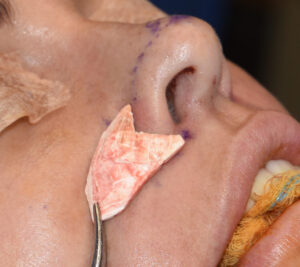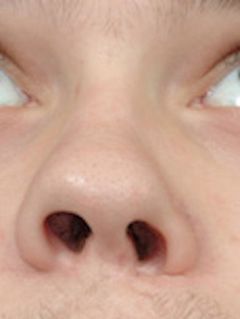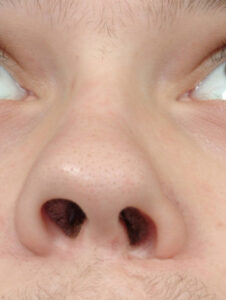Asymmetry of the nose occurs for a variety of anatomic reasons. Septal deviation, nasal bone asymmetries, upper lateral and lower alar cartilages differences and even the thickness of the nasal skin are all well recognized contributors to nasal asymmetries. Many standard rhinoplasty maneuvers can help improve the centric alignment of nasal appearance.

In the May 2021 issue of the journal Plastic and Recostructive Surgery an article in this topic was published entitled ‘The Utility of the Subalar Graft in Nostril Symmetry in Rhinoplasty’. Int this paper the authors retrospectively review a series of 68 patients over a seven year period whoa received a subtler cartilage graft for nostril asymmetry as part of their rhinoplasty. Average improvement of nasal axis deviation was 4 degrees toward the midline. Alar facial angle on base view improved 1 degree toward the horizontal. Nostril asymmetry was also improved.
The fundamental concept illustrated in this paper is that maxillary asymmetry correlates with nasal axis deviation. As a result building up the deficient maxillary base as part of the rhinoplasty procedure improves overlying nasal deviation as well as nostril asymmetry. Technically the cartilage grafts used in this paper is not really maxillary augmentation as they are placed in the soft tissues. Unless a graft/implant is placed subperiosteally a true bone augmentation is not really created. Nonetheless a subcutaneous graft can still have a significant external effect.

Dr. Barry Eppley
Indianapolis, Indiana




